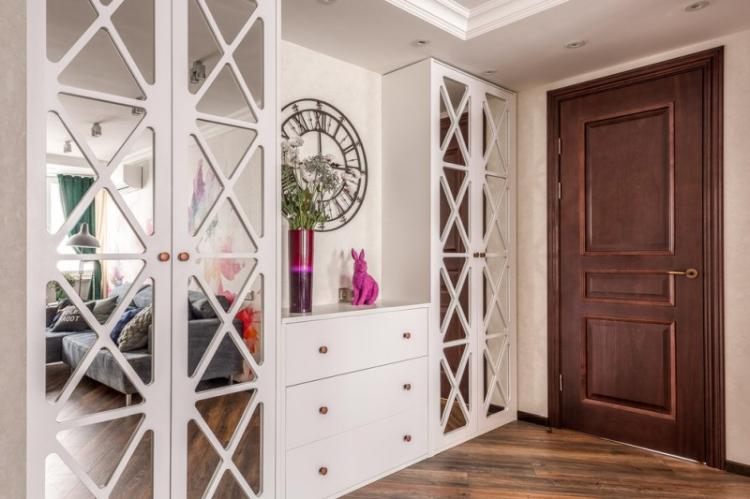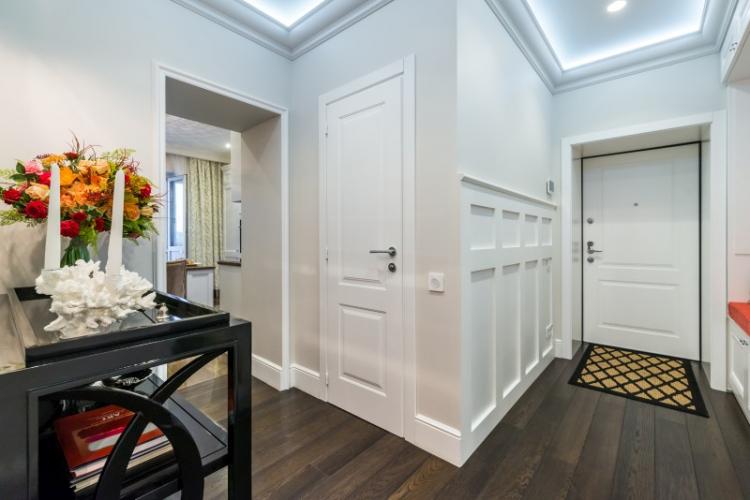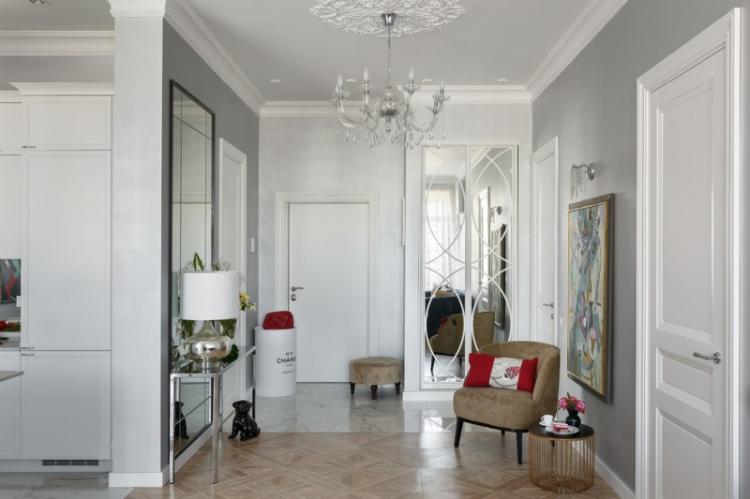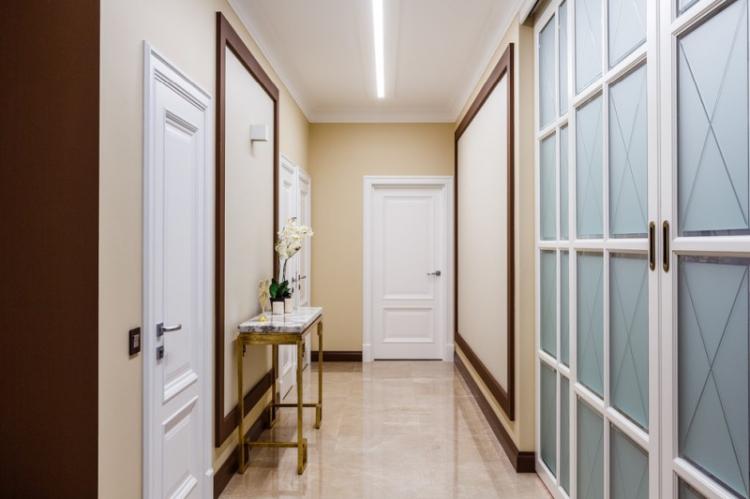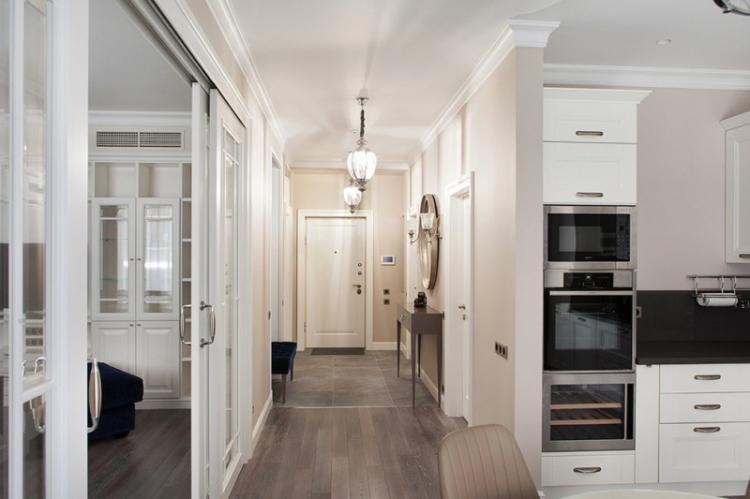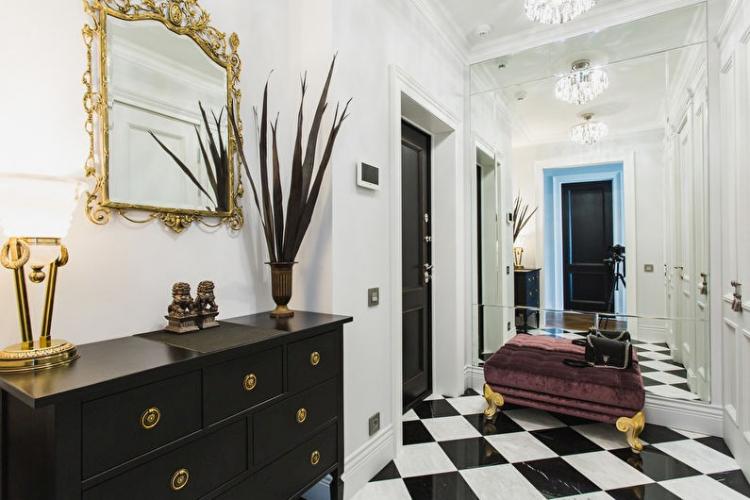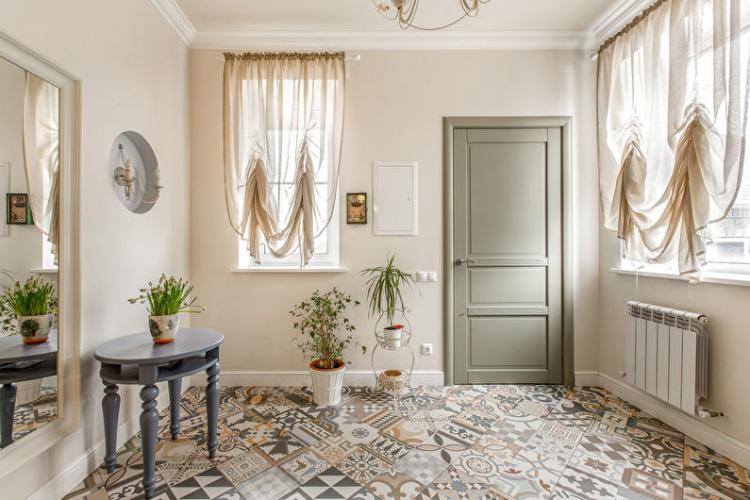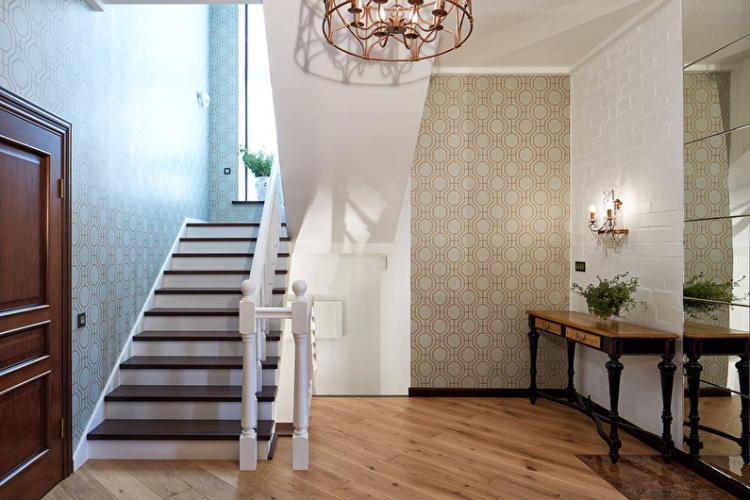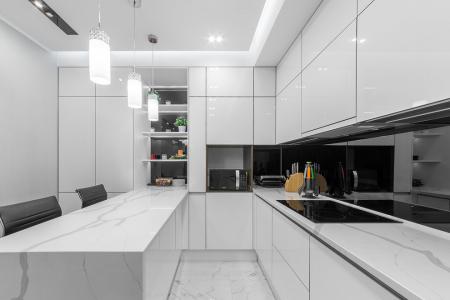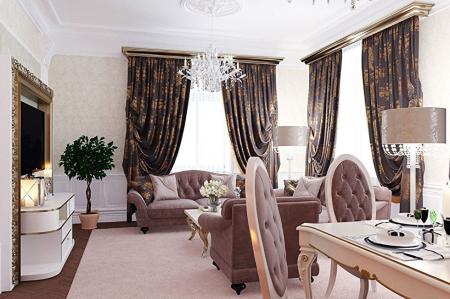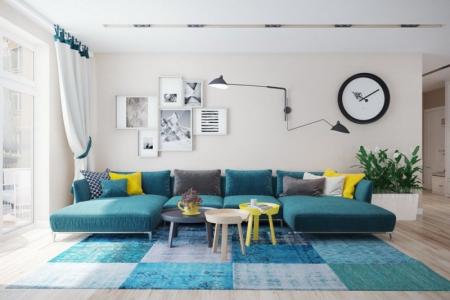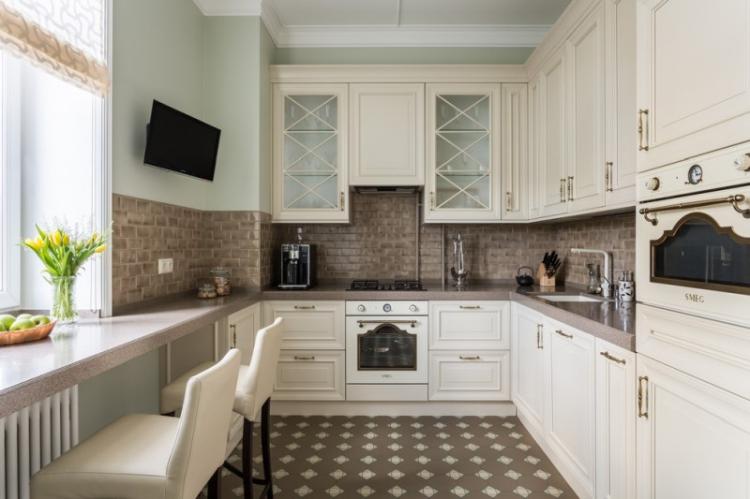
Classic interiors never go out of style, but even they gradually acquire new details and interpretations. One of these modern interpretations is neoclassicism. It combines all the main classic features, but at the same time it is much better adapted to the realities of modern houses and apartments. Interesting? We will tell you what this style is and what its features are!
Features of the neoclassical style
Neoclassicism is a modern interpretation of classic interiors, so the characteristic features have remained almost unchanged. Although much simpler visually, it is still a rich, luxurious and respectable style with expensive materials and decor.
Neoclassicism requires space, because the whole composition depends on it. It also gravitates towards symmetry and the presence of pronounced centers around which the interior is built. For example, a fireplace in the living room, a lavish dining table in the kitchen, or a four-poster bed in the bedroom.
The design is based on clean proportions, clean lines and simple geometry. As in the classics, laconic forms become the backdrop for decorative design.
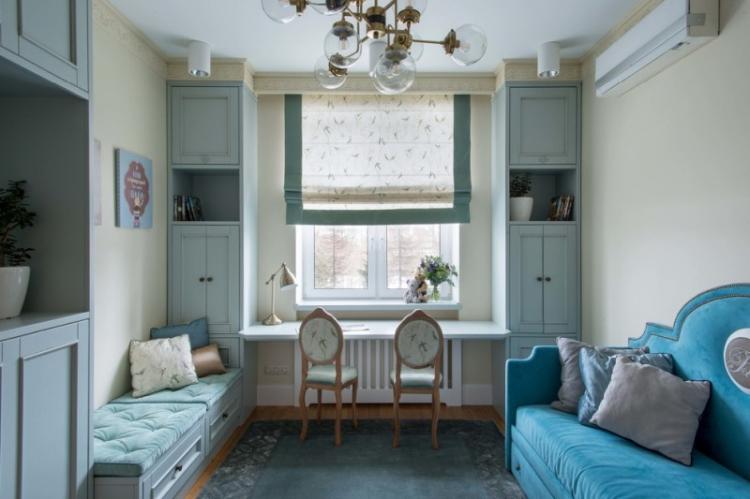
Color solutions
The color scheme of neoclassicism is similar to the palette of the classical style: it is wide, varied, but general trends are clearly visible. Background colors can be dark or light, but they are more subdued. These are white, beige, gray, shades of brown, sand and their combinations.
Bright and rich colors are used for accents and decor: furniture, textiles, lamps and paintings. Basically, these are complex and deep shades: burgundy, emerald, sapphire, mustard, olive. You should not use many shades at once: 1-2 accents are enough.
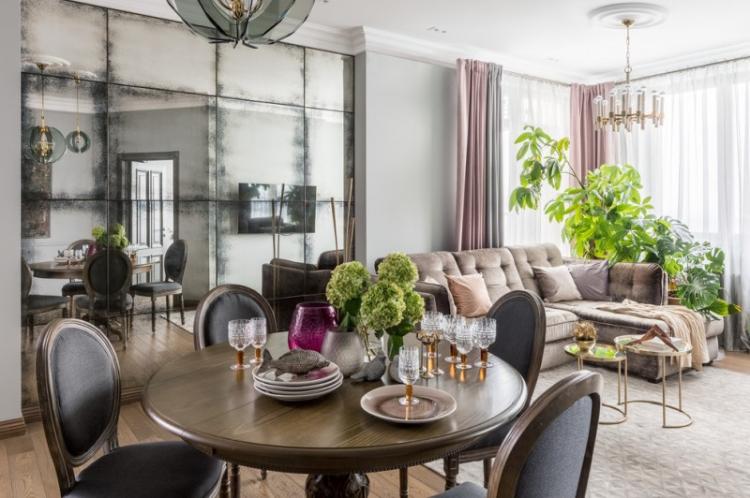
If the classics gravitate towards warm pastel combinations, then in neoclassical interiors this is not necessary. A cold palette and even dark and contrasting duets are common here. The main thing is that the size of the room allows, and the interior does not look too overloaded and gloomy.
Feel free to combine all natural shades with each other: silver, cream, golden, ocher, blue, chocolate. They are good in any combination and always look elegant and expensive.
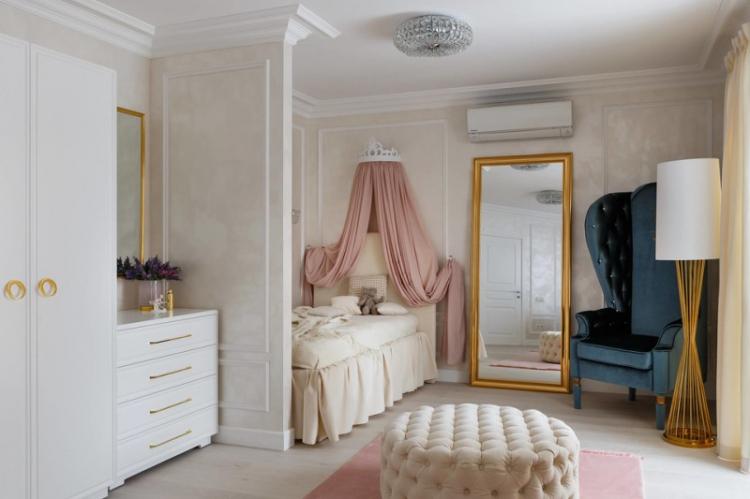
Materials and design
Neoclassicism in the interior is softer and more flexible in relation to materials, compared to demanding classical styles. Here you can use simple types of wood, decorative stone and even combine natural materials with artificial ones.
Floor finishing
The traditional flooring solution is parquet or parquet board, which came straight from the classics. But you can replace them with a more practical and unpretentious laminate that imitates an artistic coating. For functional rooms, stone, ceramic tiles, porcelain stoneware are suitable.
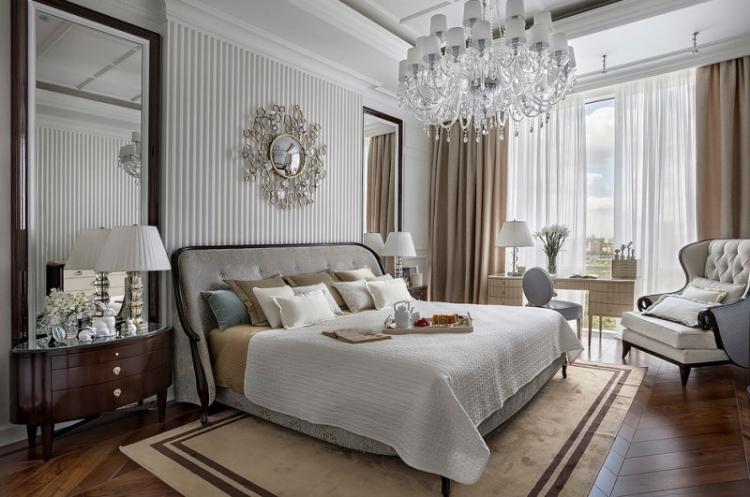
Ceiling design
Ideal neoclassical ceilings are smooth white: ordinary paint or a single-level stretch canvas. Choose a matte or satin texture, although in a small room you can even profitably beat the gloss. Along the edges there are neat stucco sills, and around the chandelier there is a decorative rosette.
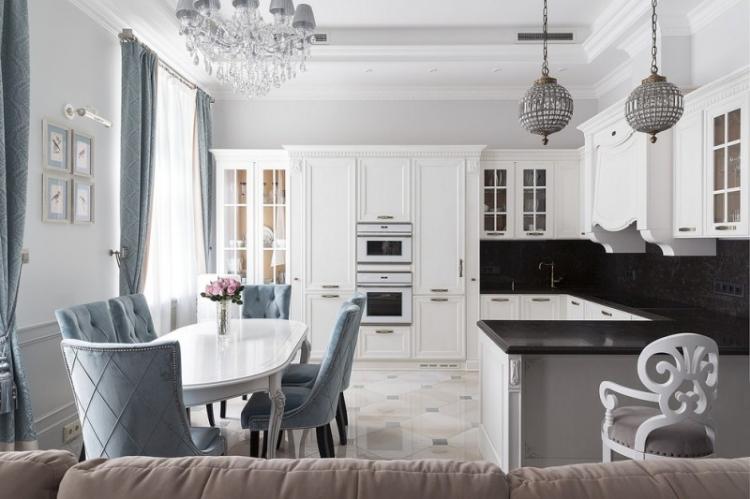
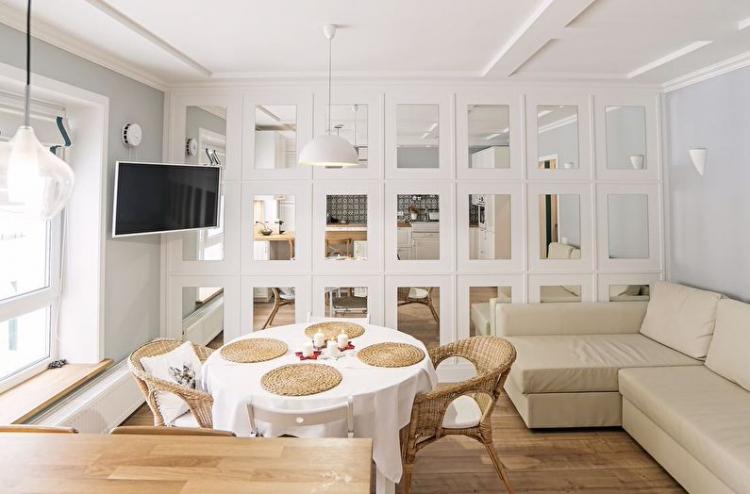
Wall decoration
Walls in neoclassical interiors are decorated with moldings and panels with simple shapes and lines. An alternative option is wallpaper or companion wallpaper in neutral shades, monochromatic or with floral motifs.
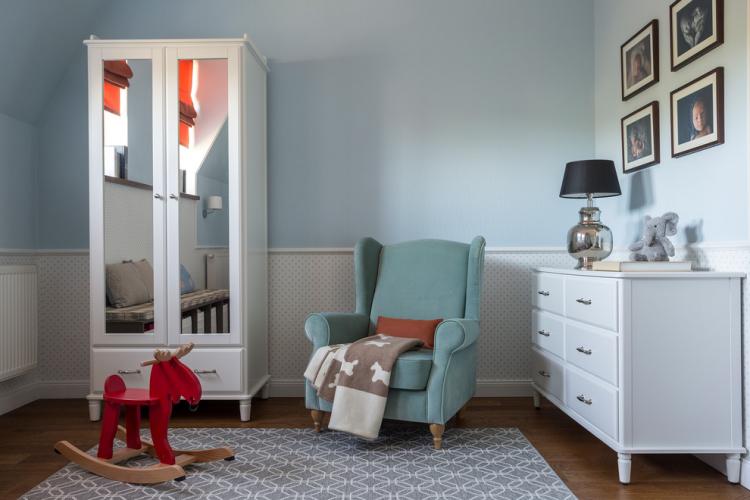
Curtains and textiles
Mostly natural fabrics are used in neoclassical interiors. But instead of jacquard and tapestry, pay attention to dense cotton, linen, mixed fabrics. They are not only cheaper, but also much more convenient to use and maintain.
Decorative compositions of curtains and curtains in neoclassicism are lighter and more concise than in classical style.Lambrequins are appropriate, but simple rectangular or rounded over dense curtains to the floor.
If you want to lay a carpet, do not choose a covering for the entire floor: 2-2.5 meters on the long side is enough. Crisp contrasting geometric designs add a modern touch to the space. And the classic blurry ornate patterns will suit lovers of more traditional solutions.
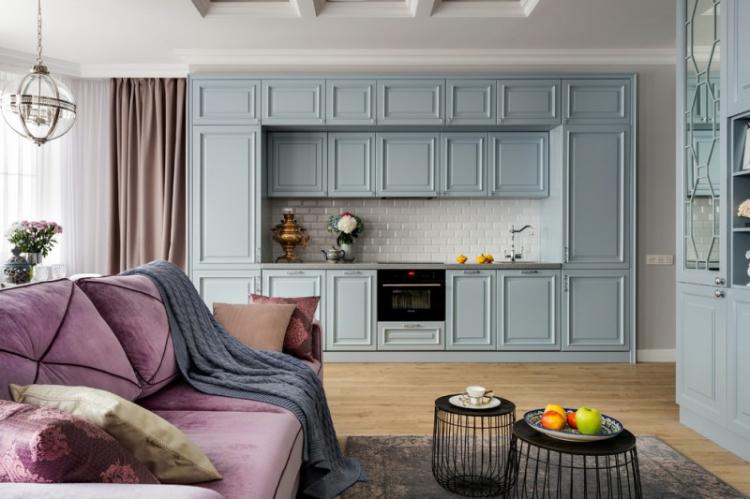
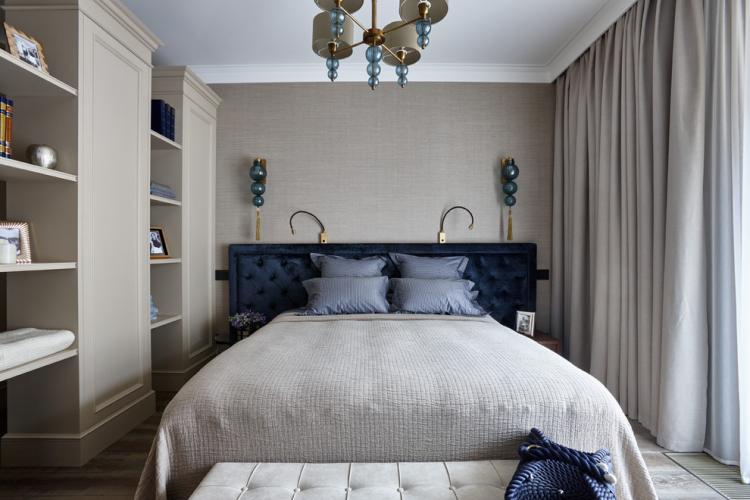
Lighting and illumination
A neoclassical interior must necessarily be light, so take care of multi-level lighting. You will need a chandelier, floor lamps, decorative sconces and table lamps with lampshades. All lamps must be placed symmetrically: on both sides of the sofa, on the bedside tables, on both sides of the mirror.
Choose decorative elements to decorate chandeliers: pendants, crystal threads, forged details. Such multi-tiered structures resemble a cake, but immediately create a solemn atmosphere in the room. In the bedroom, living room or dining room, a large luxurious chandelier will become the center of the composition.
In contrast to the classic interior, against which all modern details stand out, in neoclassical it is possible to use decorative lighting. Install LED strips in niches and at podiums, decorate shelves and shelves with graceful garlands - all this will add a unique individual flavor.
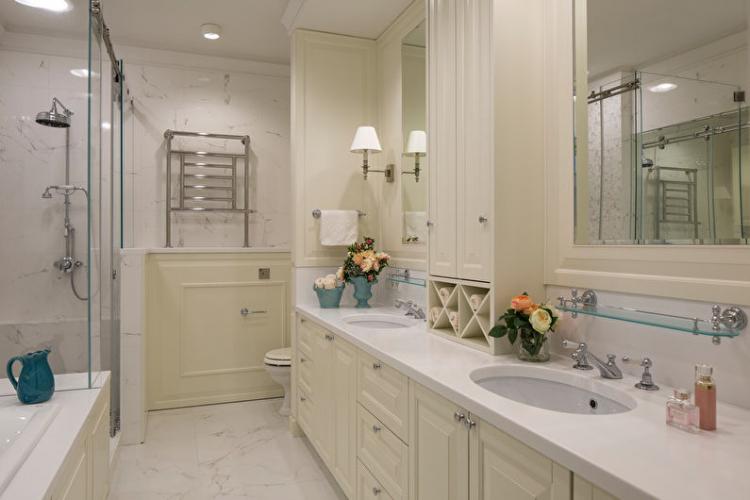
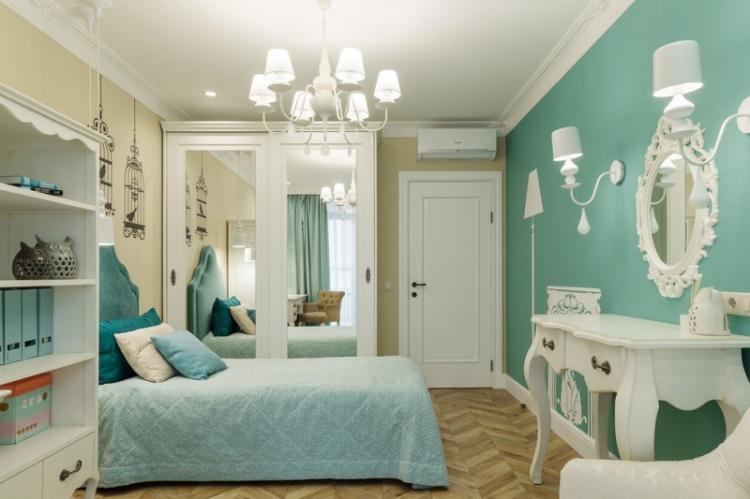
Neoclassical furniture
When decorating interiors, neoclassicism has learned a lot from modern minimalist trends. Use a minimum of furniture, and only the most necessary: this way the furnishings will be visually easier. Most often, light or red wood is used, sometimes painted wood.
Heavy and massive furniture is almost never used, and graceful raised supports or legs will help to lighten armchairs, beds and dressers. Dressing tables and coffee tables, banquets, ottomans and other classic elements look good.
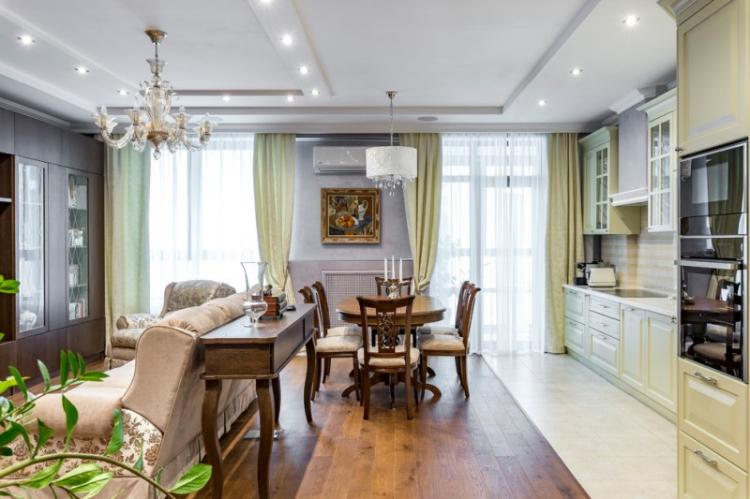
Decor and accessories
The decor in neoclassical is still luxurious and rich, but more subdued than in classic interiors. Moldings, columns, stucco moldings, thresholds and wall panels are more concise and modern here.
More practical everyday textiles may be used instead of velvet or brocade. Embroideries, brushes, canopies, lambrequins and hooks remain in place, but they are also simplified. Don't forget about decorating windows, doors and arches with stucco and pilasters.
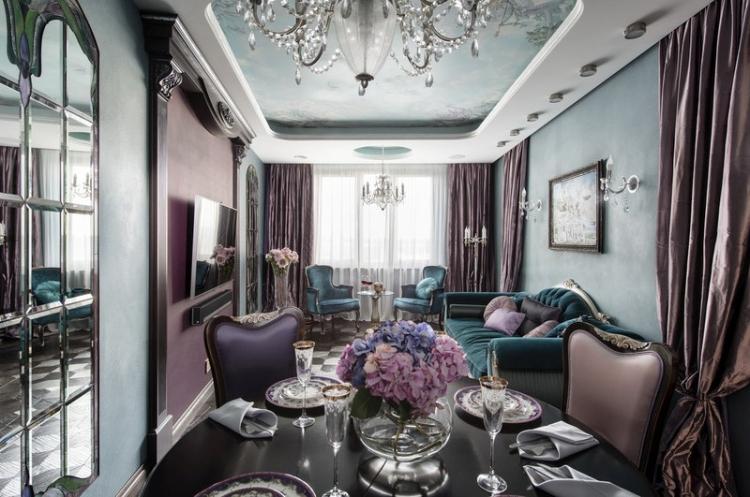
A stylish neoclassical accessory is a real or artificial fireplace. Decorate it discreetly, but highlight the entire area with a carved wooden frame or large mirror. And instead of many small scattered elements, choose one key: one big picture instead of a scattering of small ones.
In neoclassical interiors, mirror surfaces are common: gloss, glass, mirrors themselves. Such inserts visually enlarge and expand the room, make it brighter and more solemn.
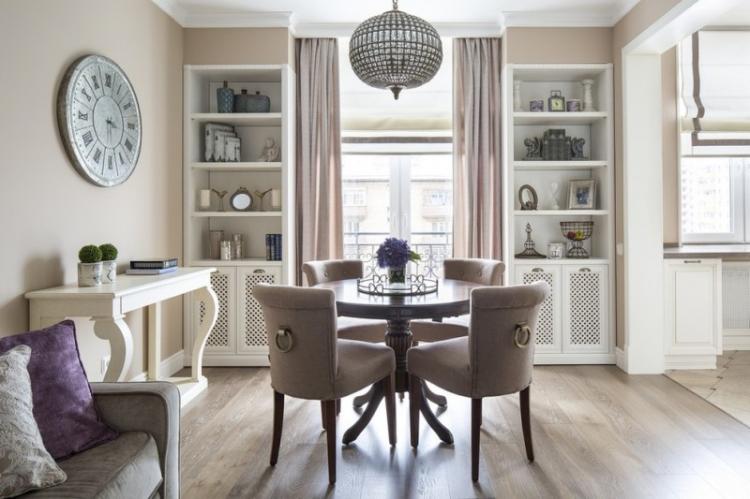
Neoclassic style in the interior - photo gallery
Neoclassicism is less demanding and more versatile than traditional classicism, baroque or rococo. It can be easily and harmoniously fit into any room: it is enough to adhere to the general principles.
Neoclassical living room design
A neoclassical living room is luxury and comfort in an elegant aristocratic interpretation. This room is designed for receptions and pleasant, relaxing family evenings.
The living room is the heart of the house, which is why its interior needs to be planned especially carefully. Neoclassicism manages to delicately balance on the verge between laconicism and luxury.
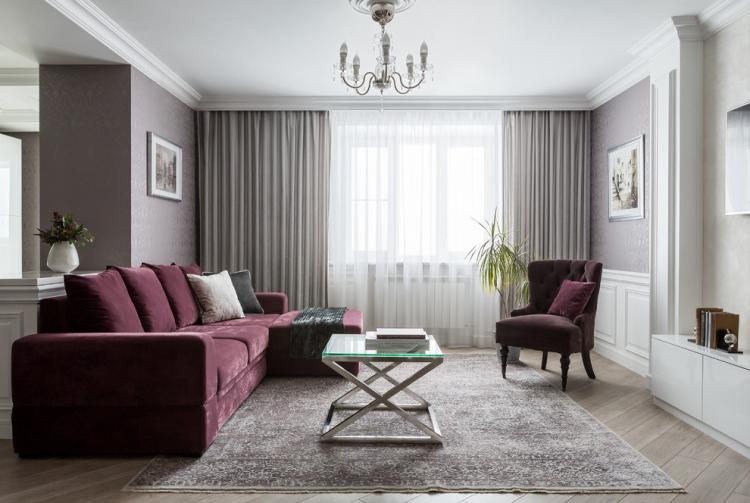
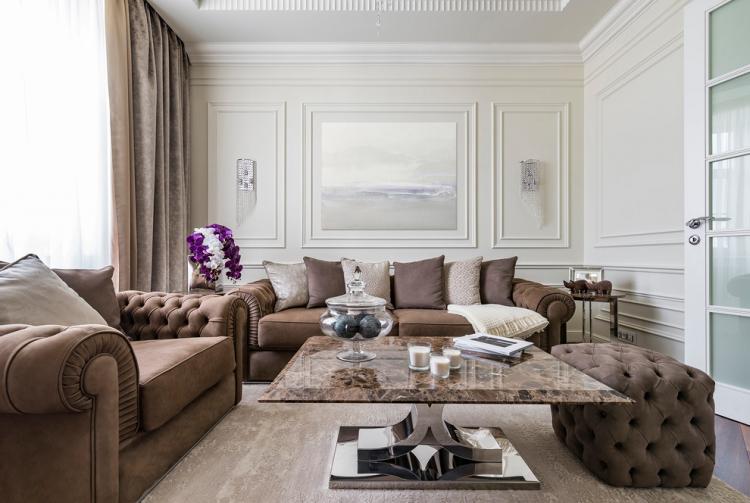
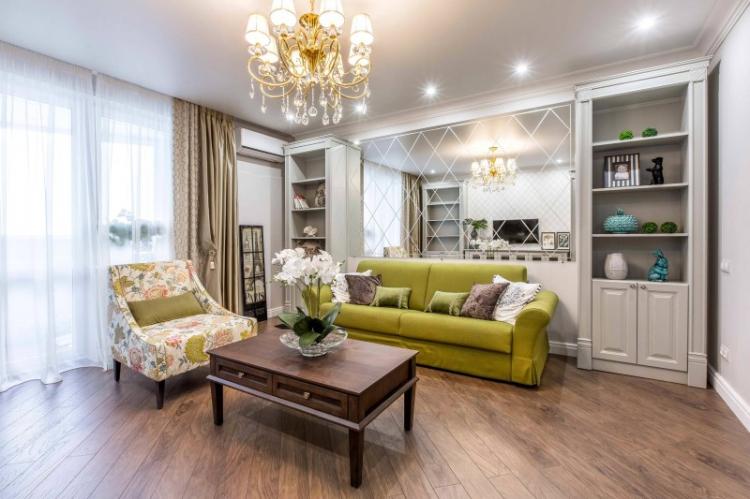
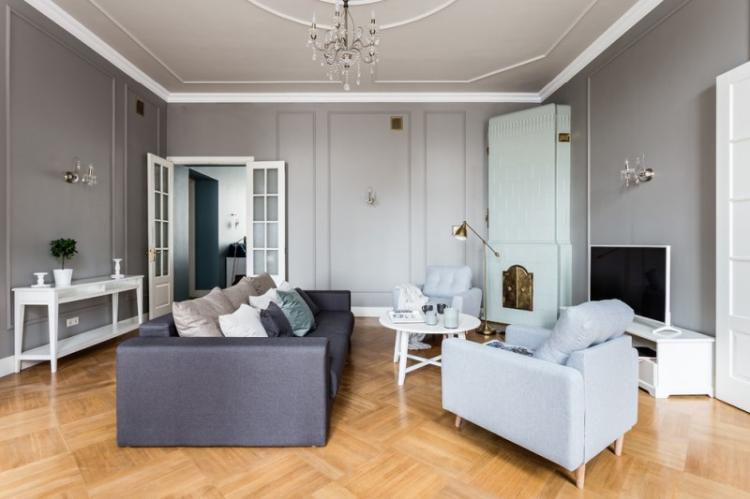
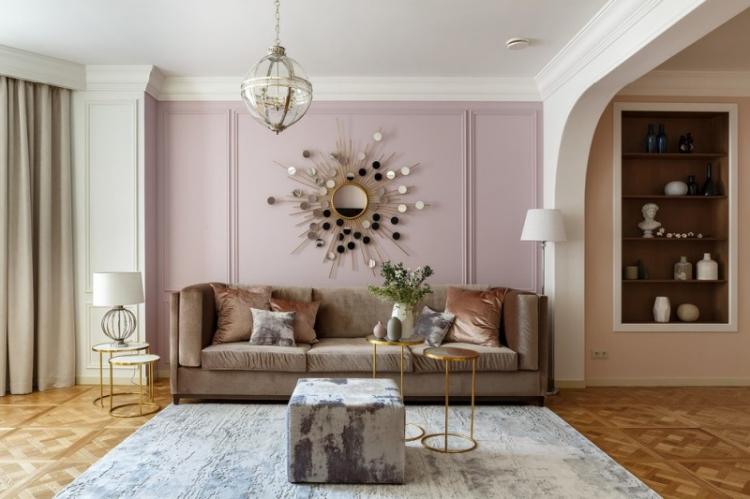
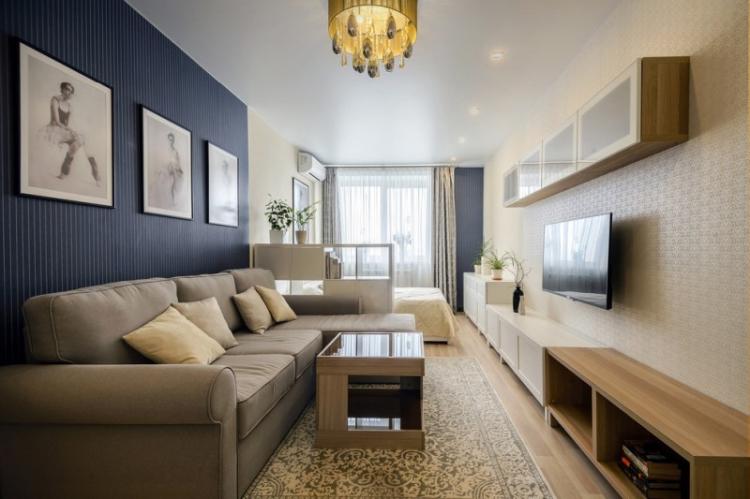
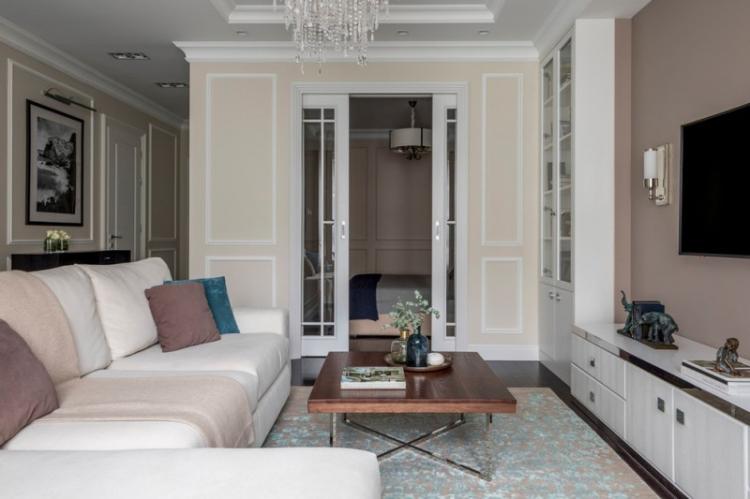
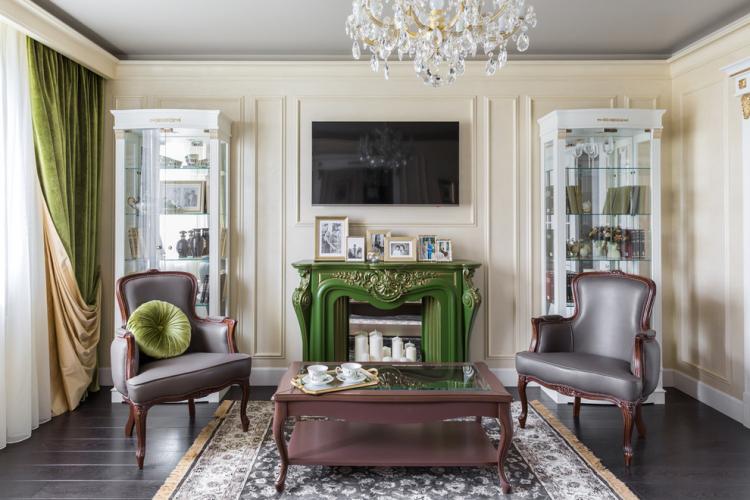
Neoclassical kitchen design
Neoclassical cuisine looks fresh, stylish and sets you up for work. It is pleasant to cook in it, and to meet guests, and to spend family evenings. To do this, equip a full-fledged dining area or an island with a bar counter - they will naturally fit into the neoclassical interior.
Pay special attention to the choice of materials, because the kitchen is always moisture, temperature, fat, smells and food. Countertops made of artificial stone, laconic wooden headsets, and a mosaic apron look good.
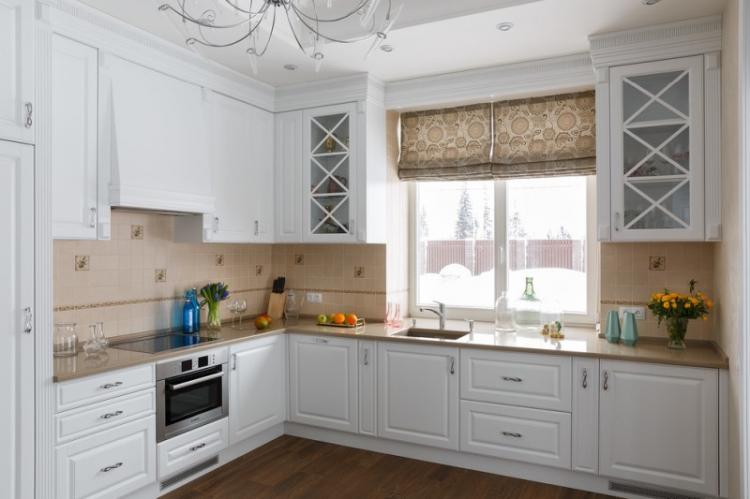
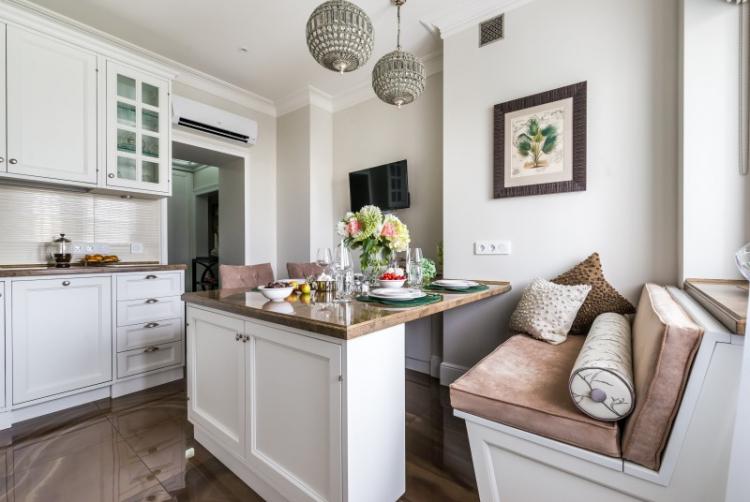
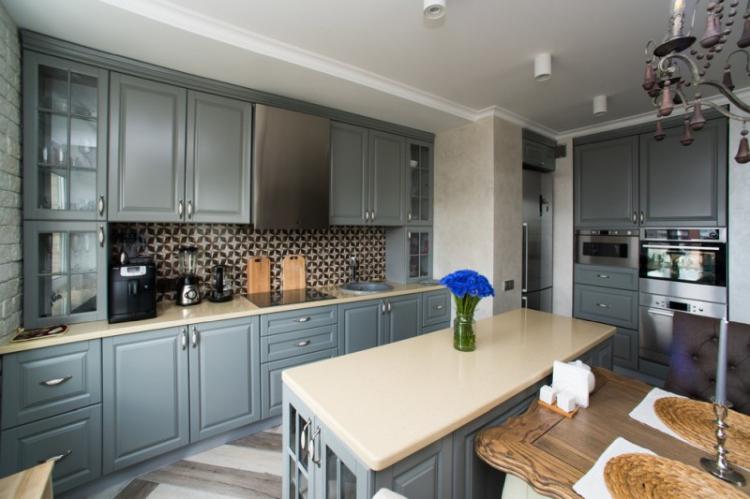
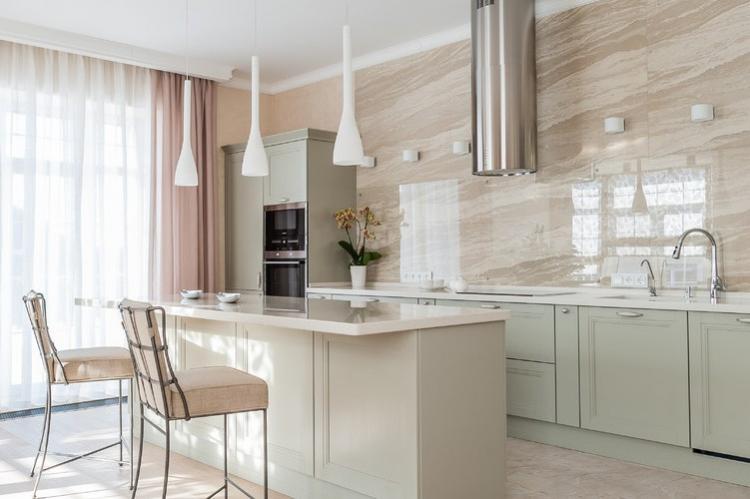
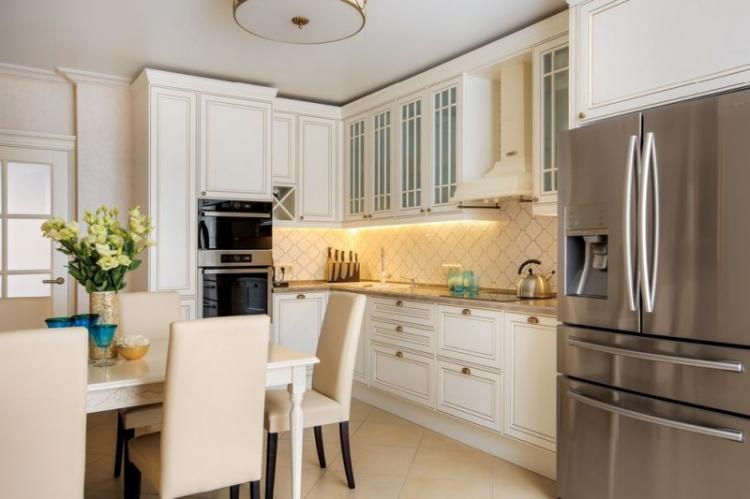
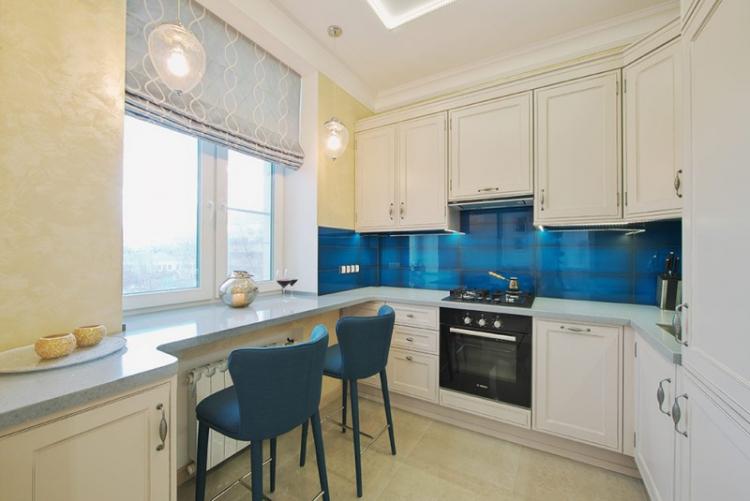
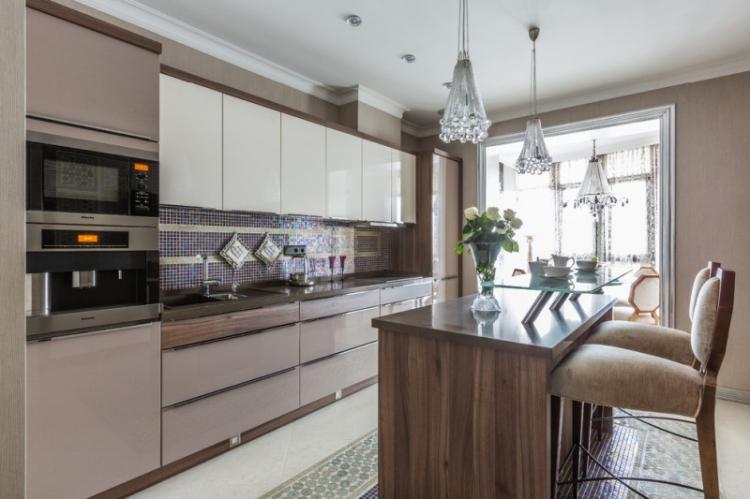
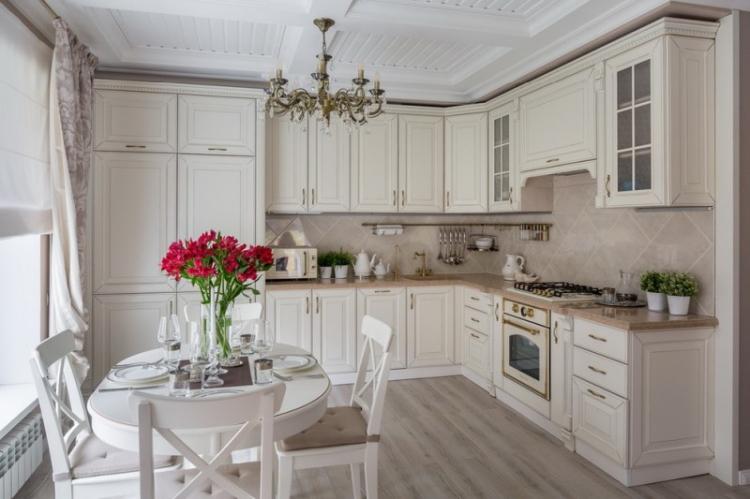
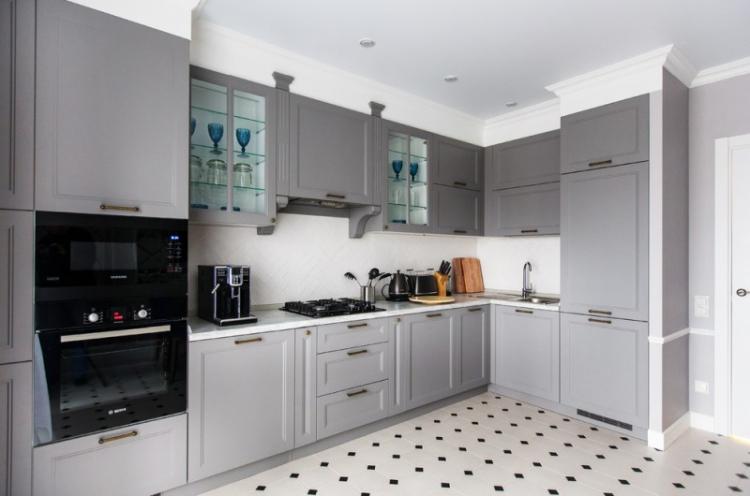
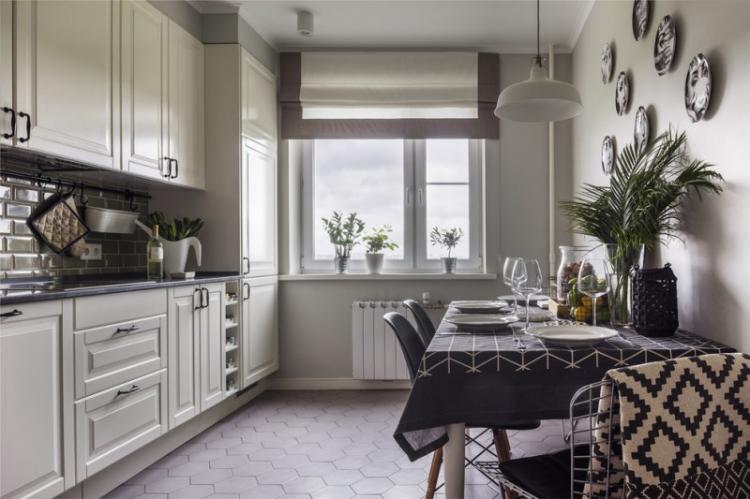
Neoclassical bedroom design
Neoclassic is great for bright and spacious bedrooms. The center of the composition is a large and wide exquisite bed, which is framed by side tables or small tables in the same style.
It is better to replace the oversized wardrobe with a chest of drawers, and if space permits, install an elegant dressing table in the corner. Dark wooden furniture looks stylish and at the same time bright against the background of light pastel or gray finishes.
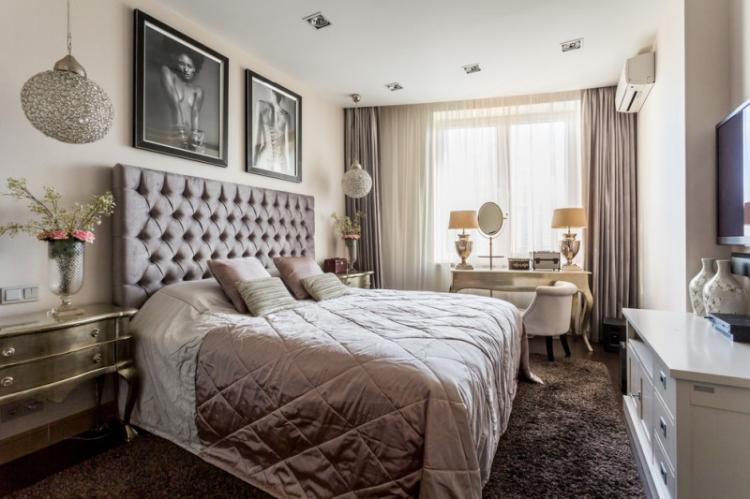
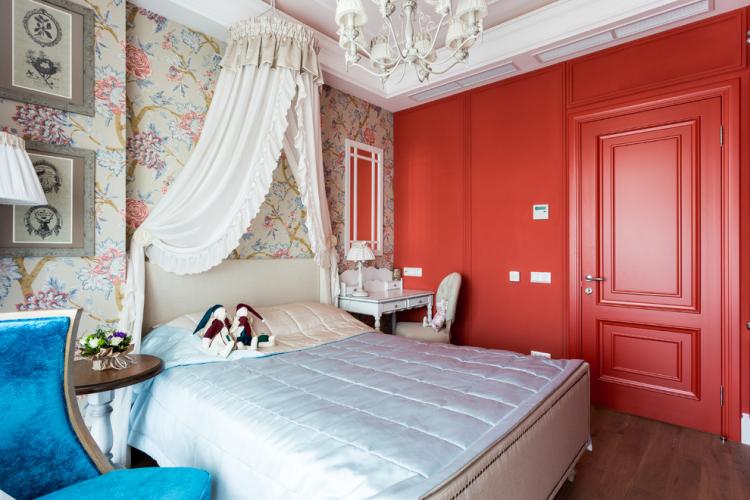
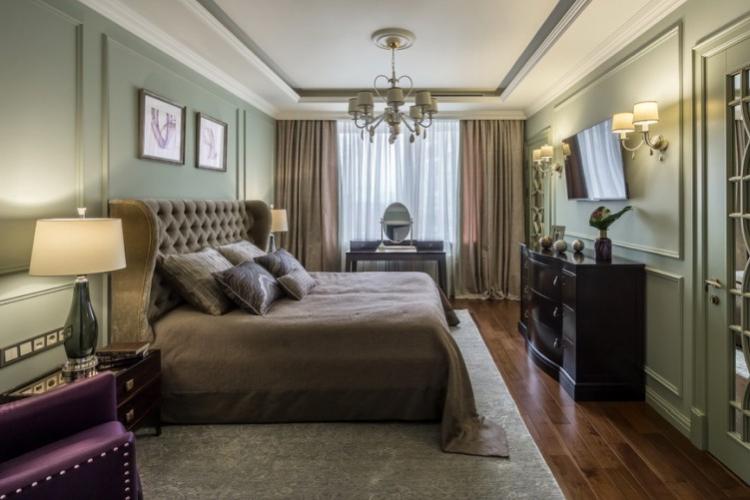
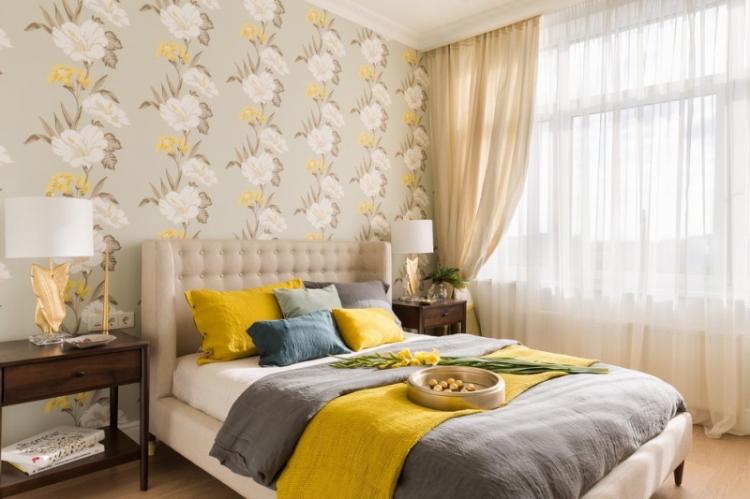
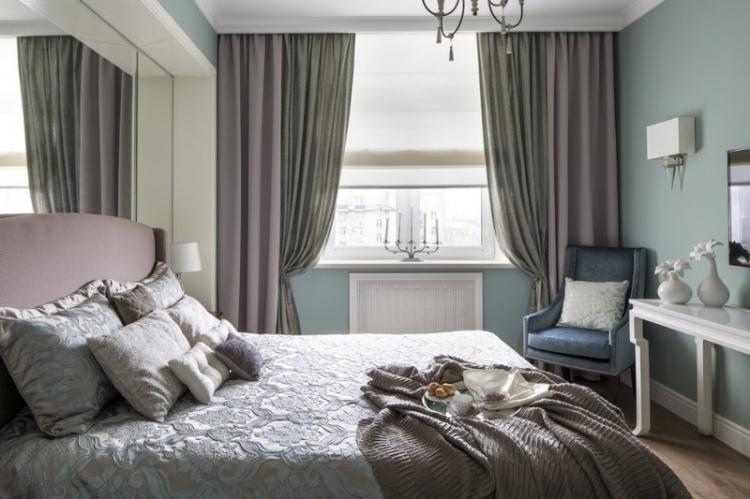
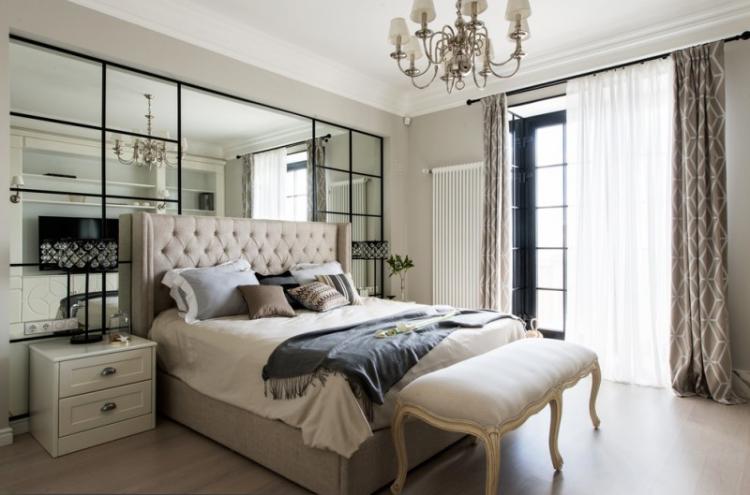
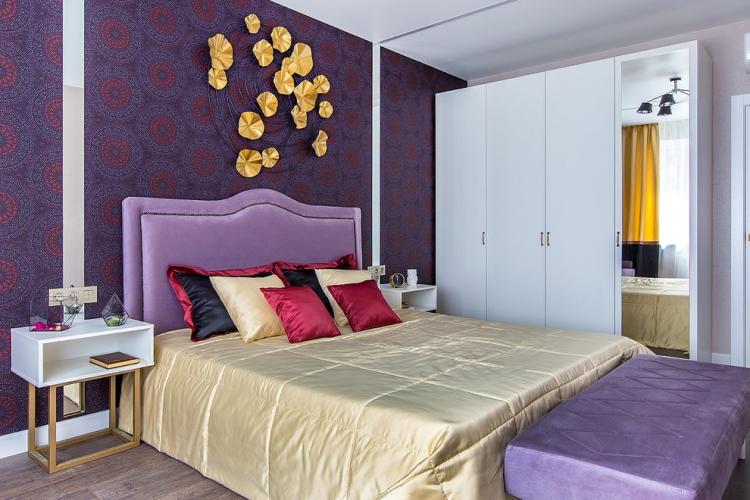
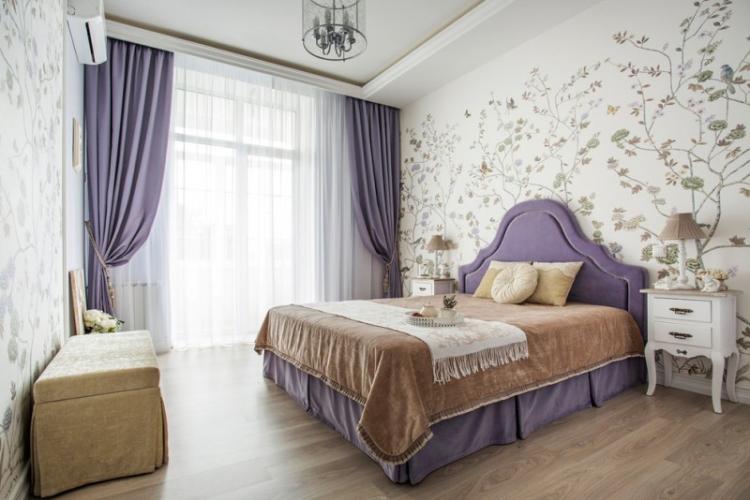
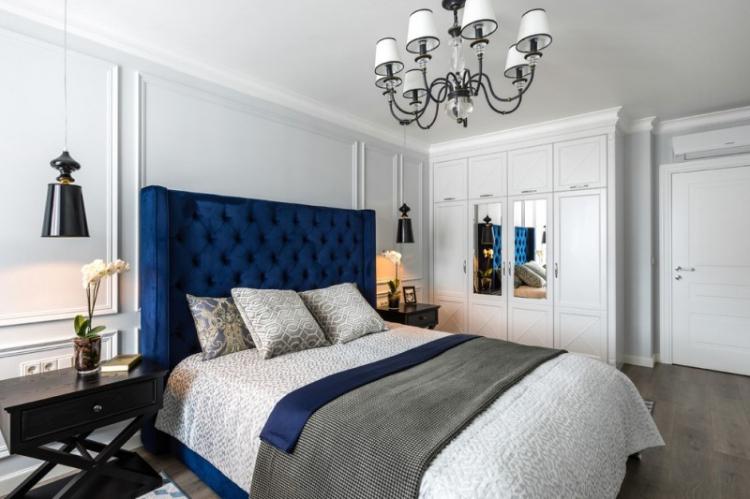
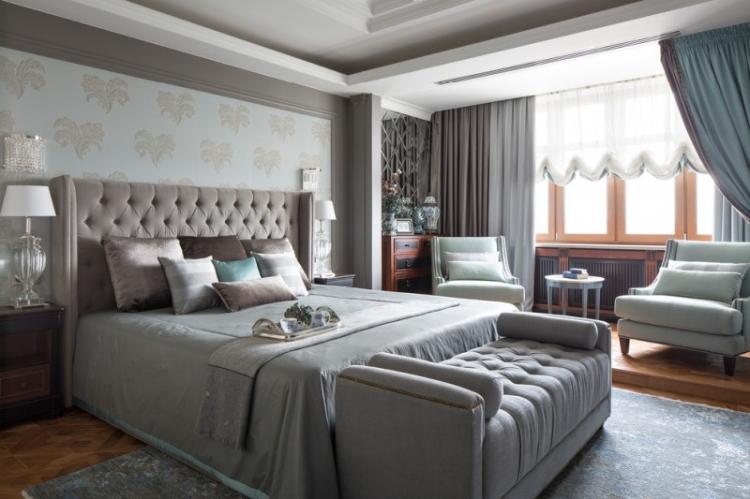
Neoclassical bathroom design
If you want to recreate the feeling of comfort and luxury in a small bathroom, then neoclassic is your choice. It is less bulky and overloaded than classic interiors, but it looks just as good.
Use mirrors, mother-of-pearl tiles, openwork ornaments, silver or pearl colors. The classic bathroom bowl on curved legs and a mirror in a massive decorative frame, combined with more laconic and minimalistic furniture, look great.
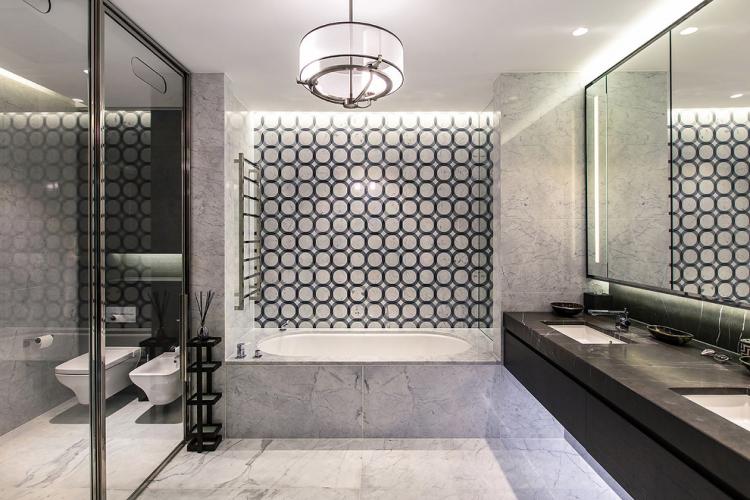
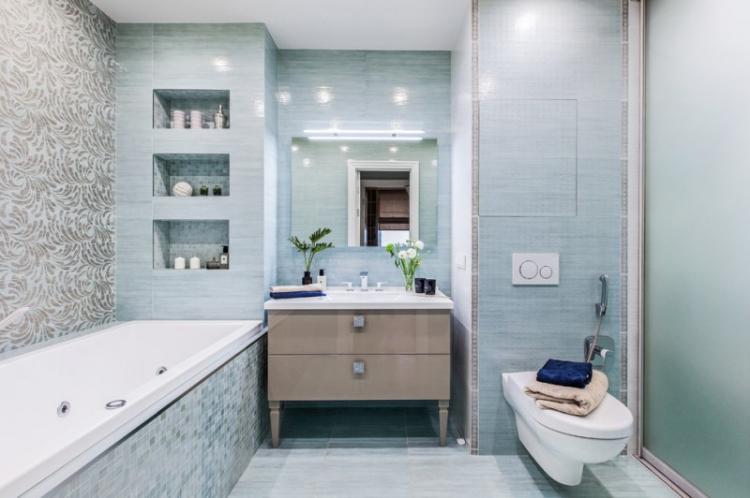
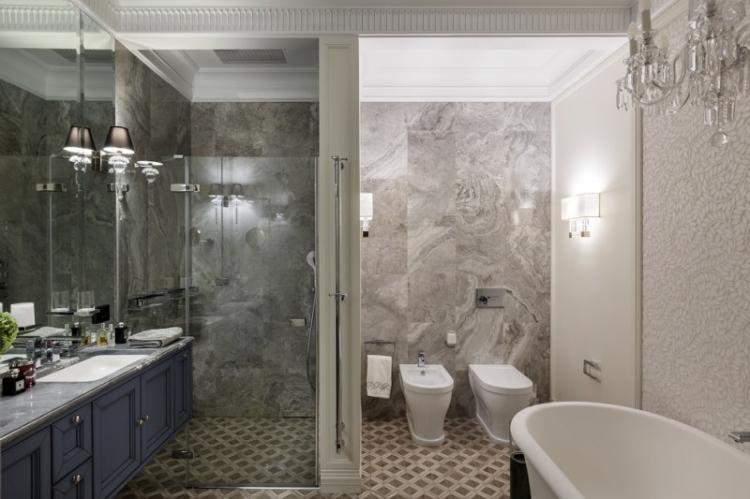
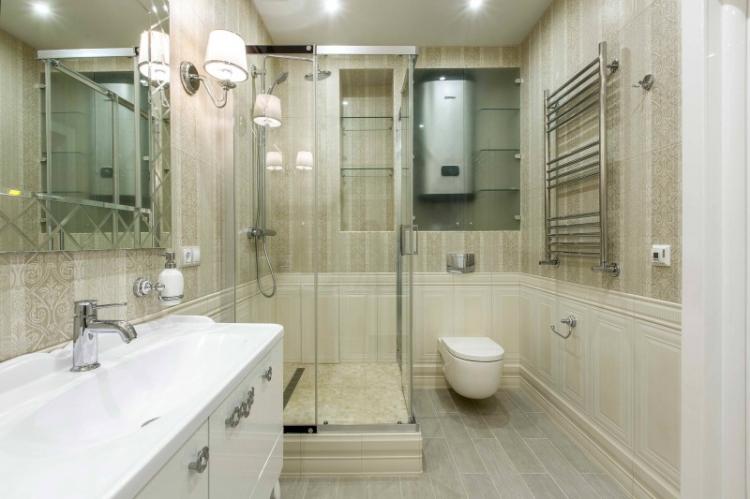
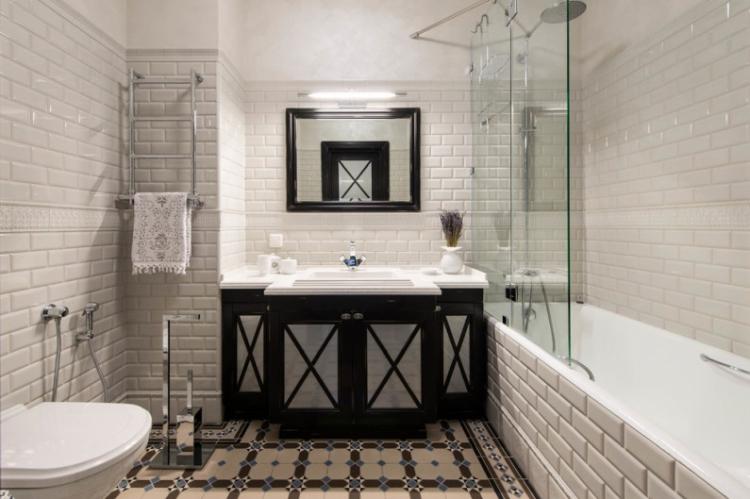
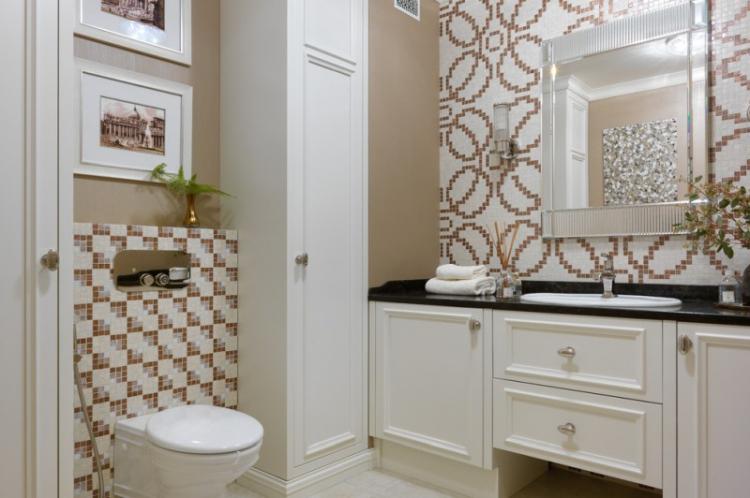
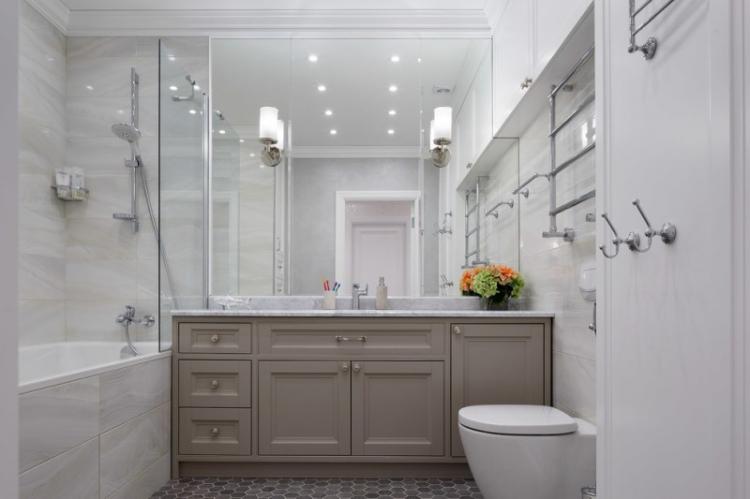
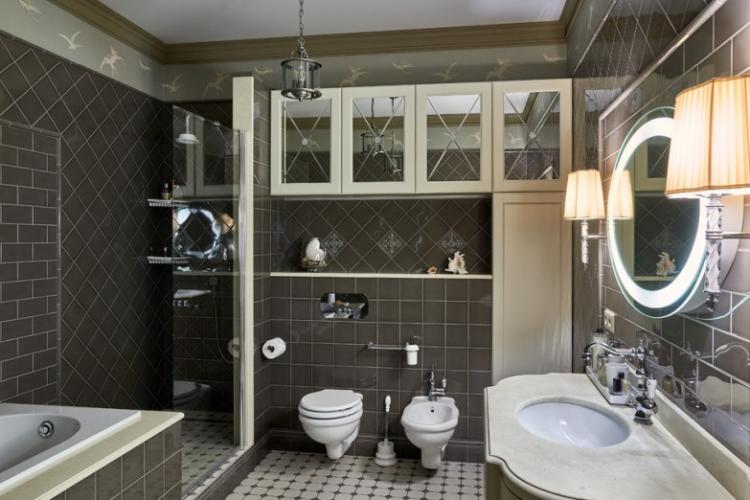
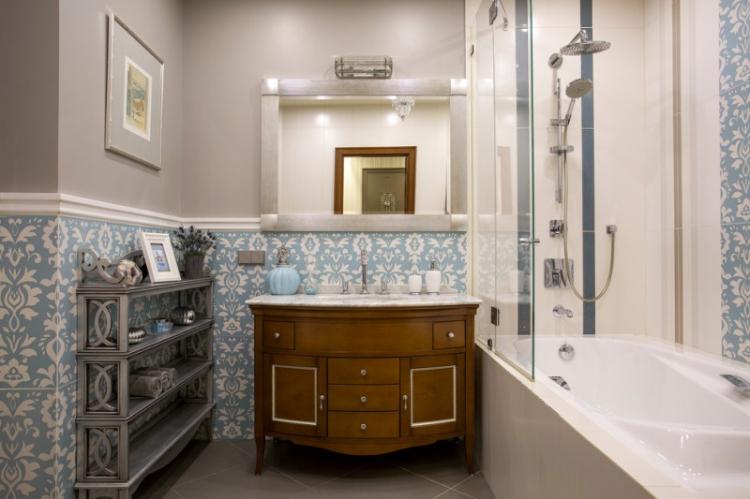
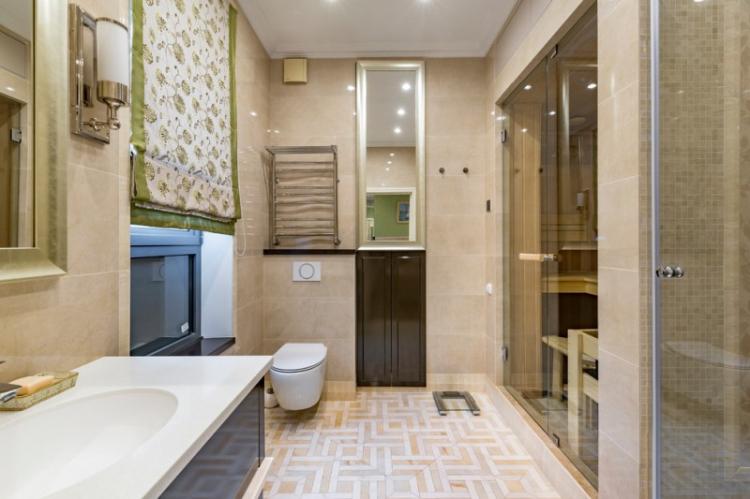
Children's room design in neoclassical style
It may seem that neoclassicism is too strict and complex style for decorating a child's room. But in fact, simple, restrained and laconic, it will become a calm background for further experiments.
Decorations, toys, textiles and other accents are enough to completely transform the interior. A light neutral neoclassical base can be combined with any of them, so this room will grow with the child.
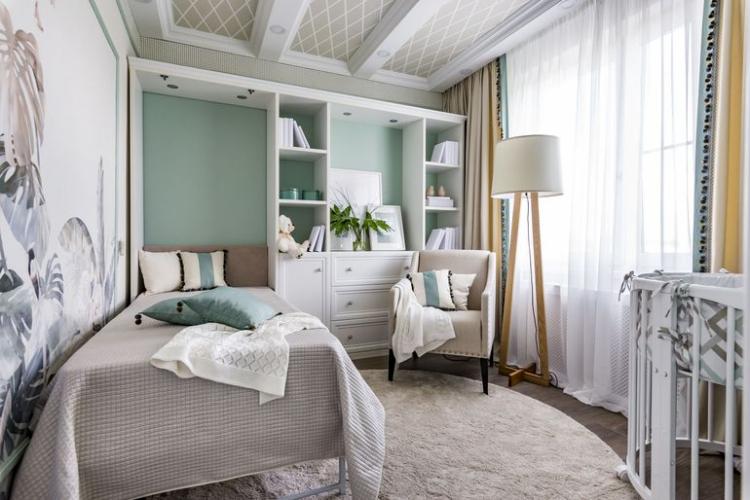
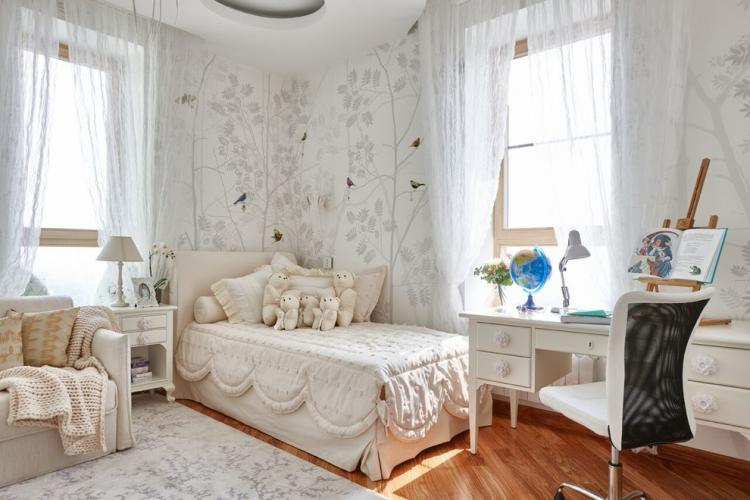
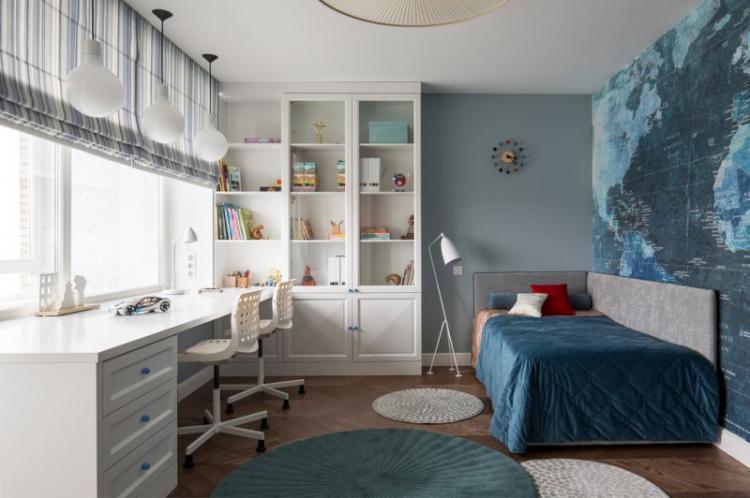
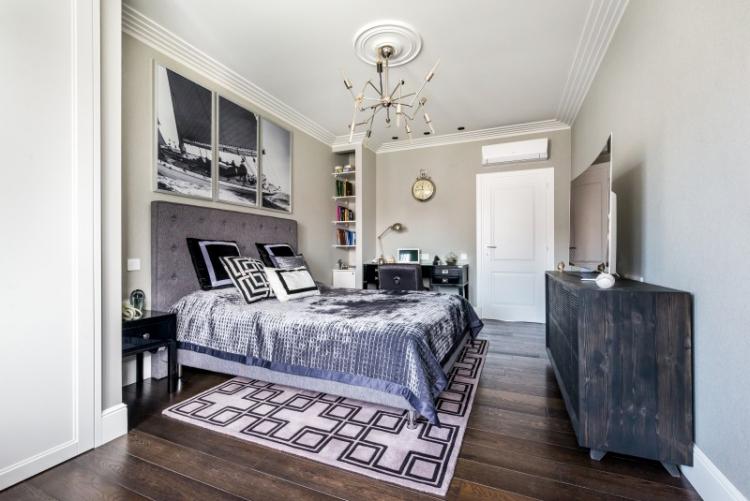
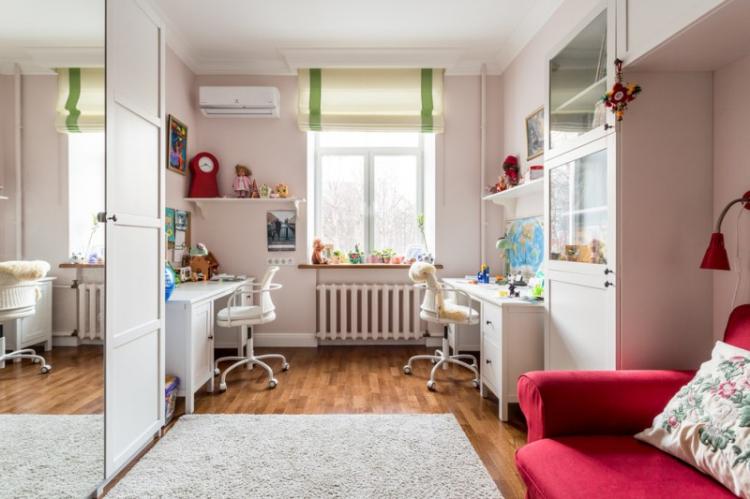
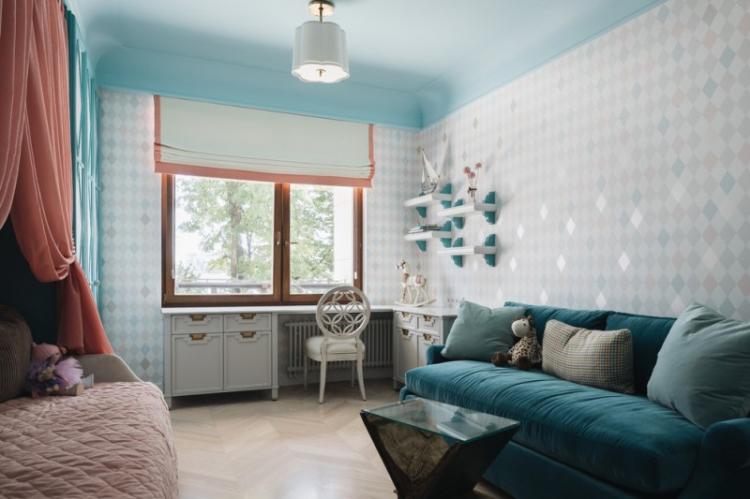
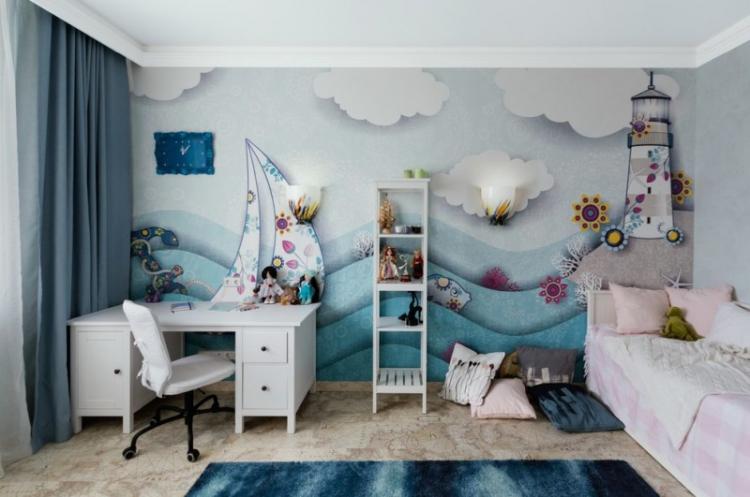
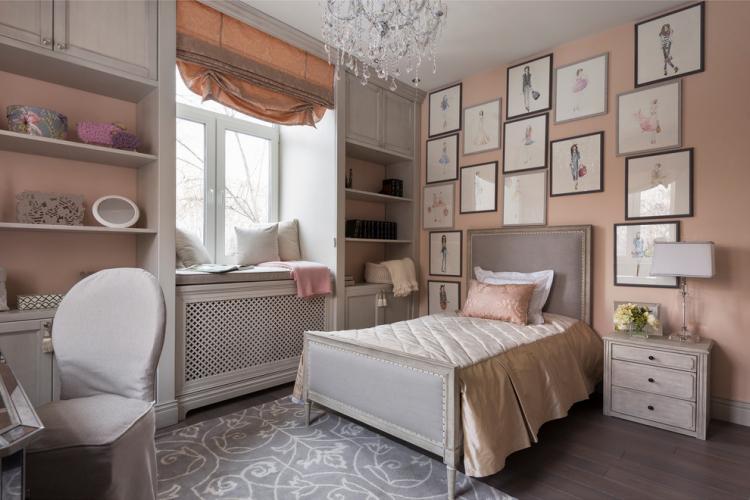
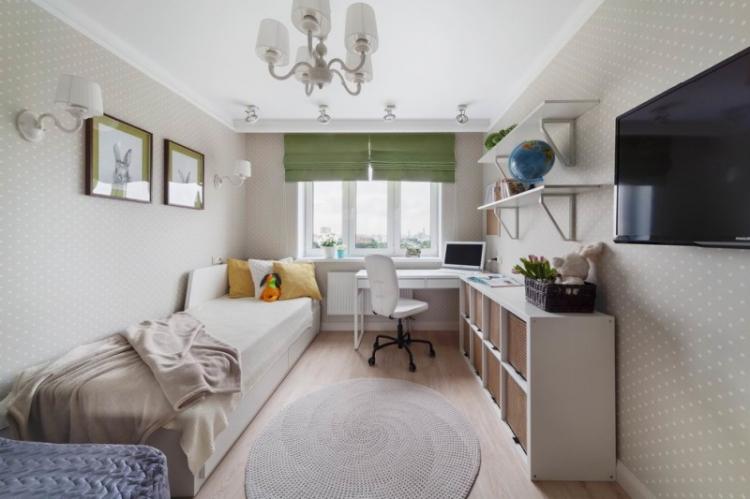

Hallway design in neoclassical style
The hallway is the hallmark of the house, because it always creates the first impression on the guests and sets the mood for the household. It is difficult to decorate the hallway: you have to neatly fit everything you need, hang clothes, arrange shoes, add mirrors. Laconic and simple neoclassicism will help you to do this with style and taste.
For finishing, choose wear-resistant materials: washable panels instead of paper wallpaper, porcelain stoneware or tiles instead of parquet. Bright lighting and light muted shades of neoclassicism are especially relevant in a dark small hallway.
